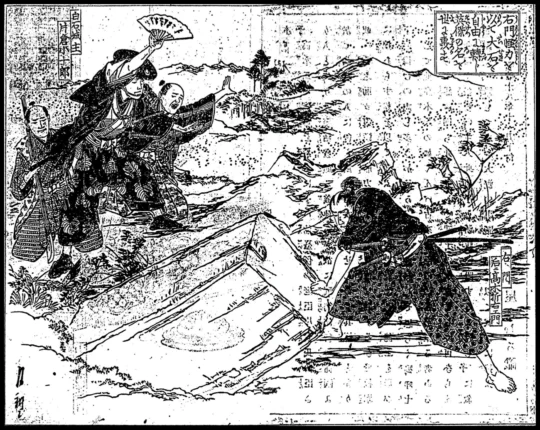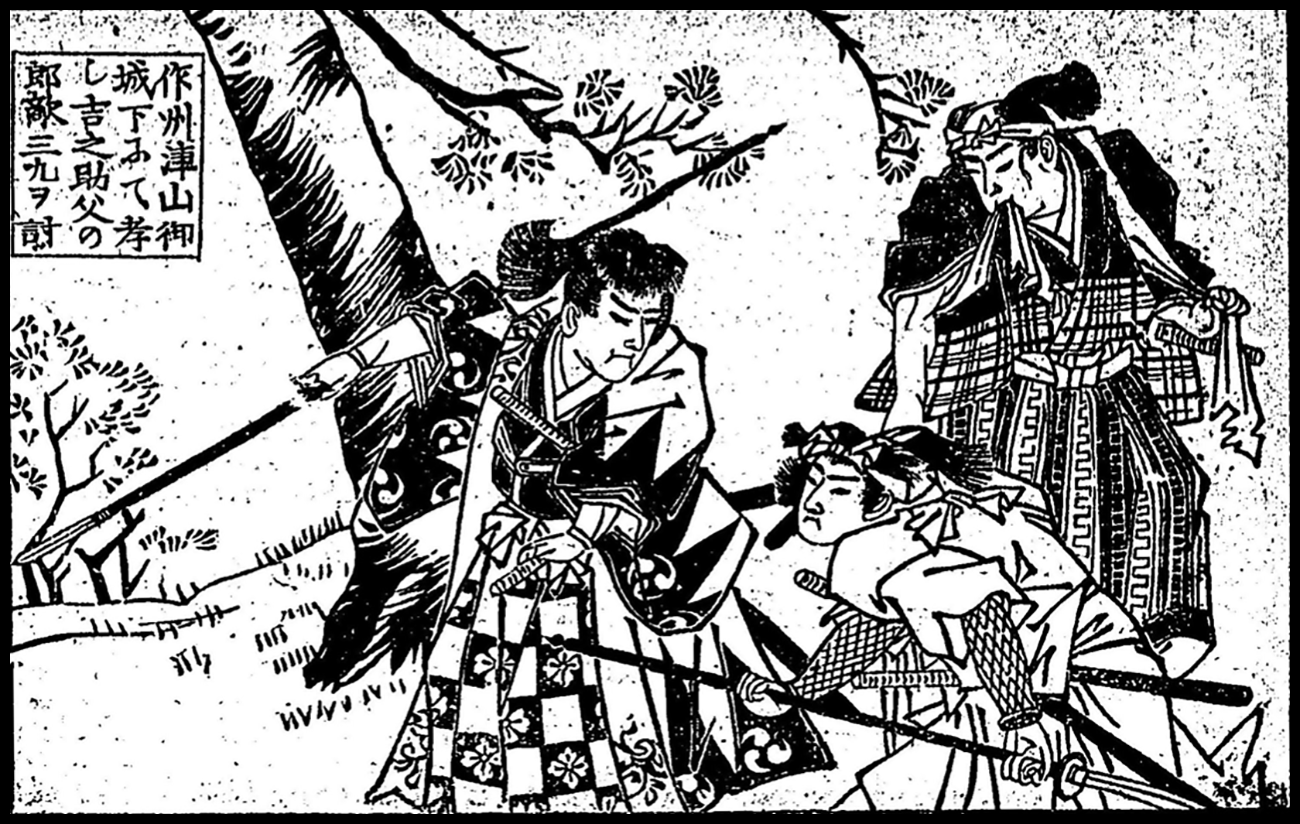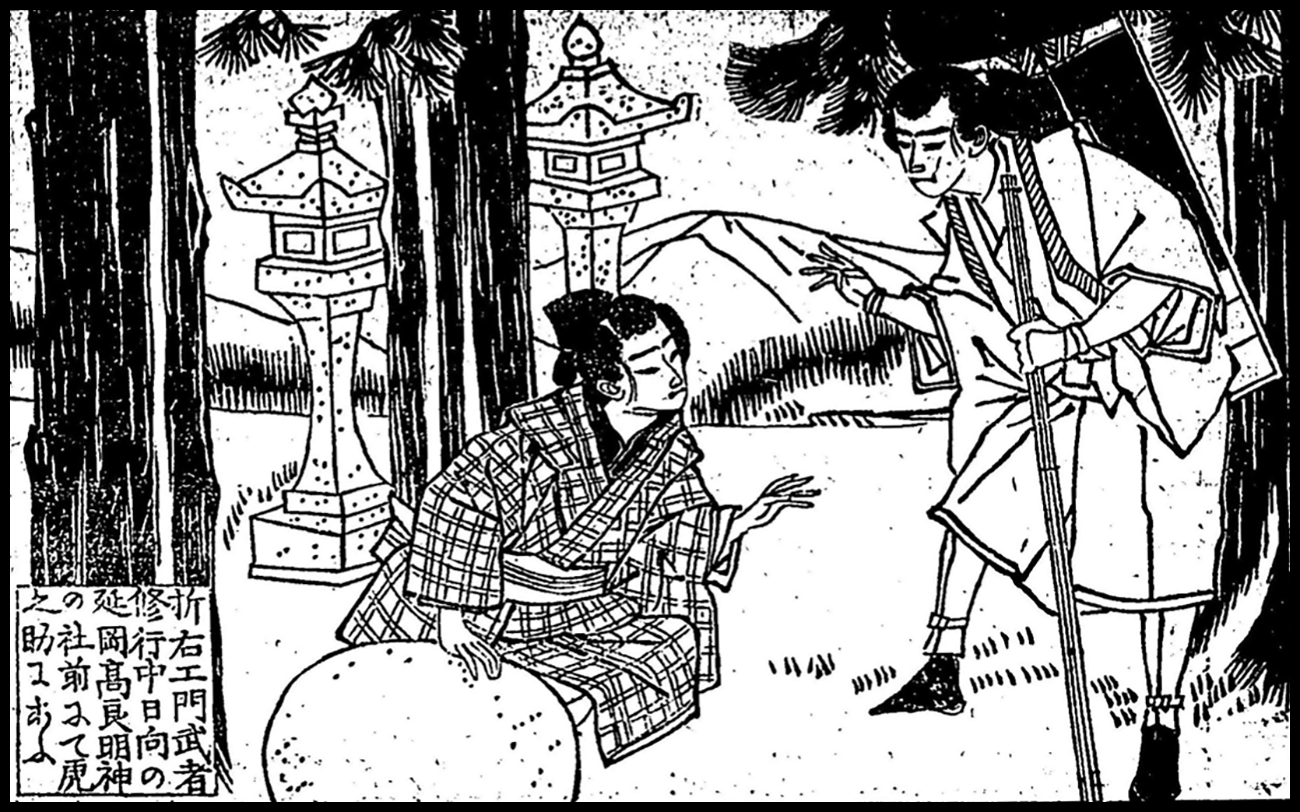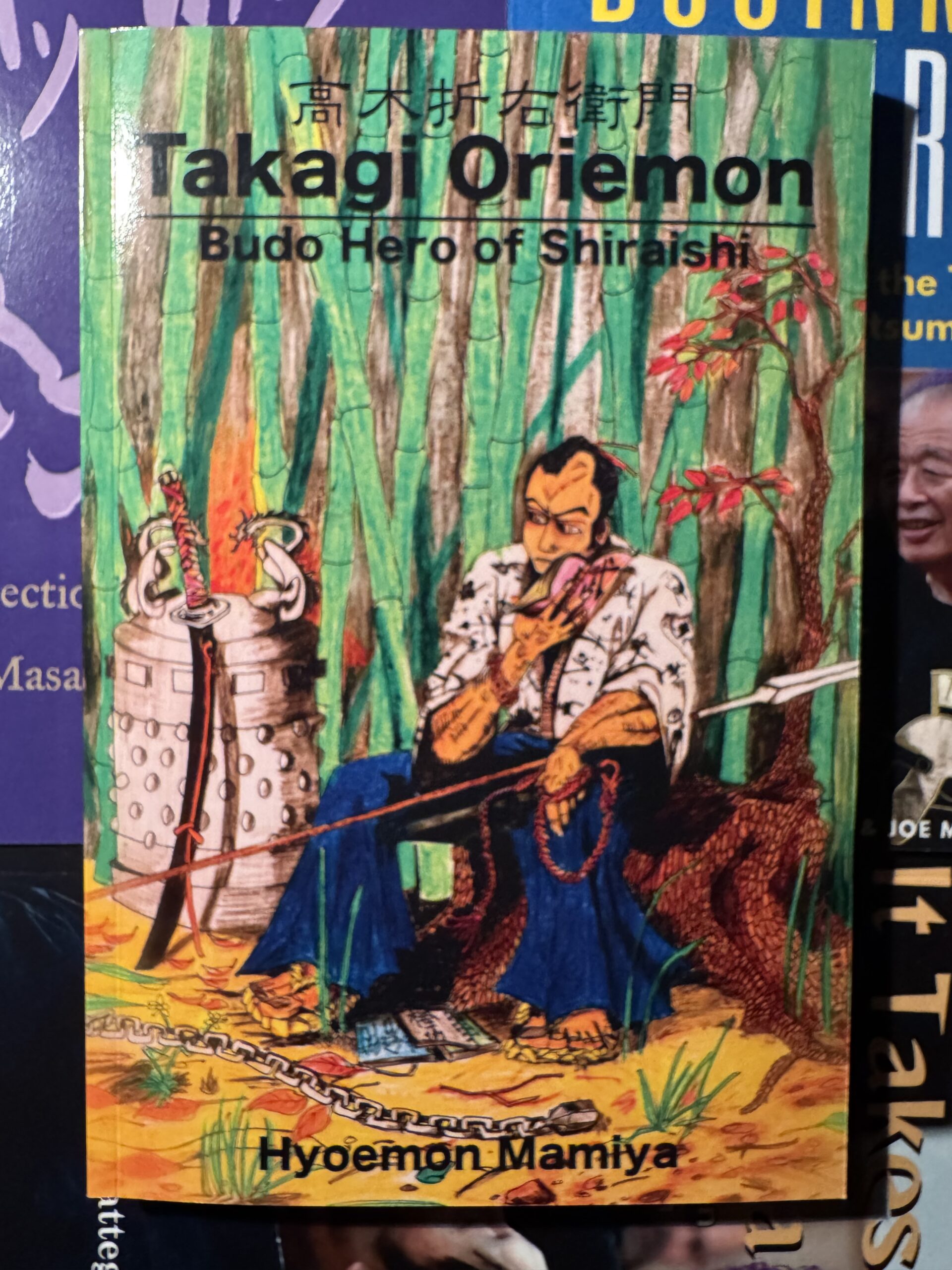高木折右衛門物実録 Legacy of Takagi Oriemon: Budō Shiraishi Ei Manuscripts and Takagiyōshin-ryū
From 武神館兜龍 Bujinkan Toryu by Toryu
Takagi Oriemon Shigenobu—a revered samurai of the Shiraishi domain during the Edo period and the co-founder of Takagiyōshin-ryū with his son—is immortalized through a fascinating series of manuscripts. These works, collectively referred to as Budō Shiraishi Ei (“Martial Tales of Shiraishi”), document his Musha Shugyō (warrior’s pilgrimage) and reveal an intricate web of historical, cultural, and martial growth. This article explores the development and variations of these manuscripts, uncovering how Takagi’s legacy, including the founding of Takagiyōshin-ryū, was shaped over centuries.
Overview of Budō Shiraishi Ei and Takagi Oriemon

The core narrative of Budō Shiraishi Ei revolves around Takagi’s adventures as he journeyed across Japan, honing his skills and imparting lessons. Initially penned by Mamiya Hyoemon—a retainer of the Katakura family who served as the lords of Shiraishi Castle—the manuscripts underwent numerous reproductions and expansions. Early texts focus on Takagi’s personal strength and moral character, while later versions elaborate on his philosophical teachings and broader socio-cultural themes. Takagi’s martial philosophy ultimately culminated in the founding of Takagiyōshin-ryū alongside his son, ensuring the continuity of his techniques and teachings.
Key Manuscript Variants of Budō Shiraishi Ei
Researchers have identified multiple manuscript versions, divided into two main categories: existing texts (kijutsu-bon) and newly discovered texts (shinshutsu-bon). The most notable versions include:
1. The Katakura Family Manuscript
- Title: Budō Shiraishi Banashi
- Format: 10 scrolls in 5 volumes
- Key Features: The foundational text focusing on Takagi’s deeds as recounted by Mamiya Hyoemon.
- Significance: Served as the basis for subsequent reproductions.
2. Ryukoku University Library Manuscript
- Format: Single-volume edition
- Copyist: Mizuno Katsuhide (associated with the Moonlight Pavilion)
- Classification: Known as the “Hei Version” (Hei-bon).
- Details: Features stylistic enhancements with minimal content variation.
3. Miyagi Prefectural Library Edition
- Format: 15 scrolls in 3 volumes
- Classification: “Otsu Version” (Otsu-bon).
- Traits: Retains close fidelity to the Katakura family manuscript, with slight editorial refinements.
4. Newly Discovered Texts (Shinshutsu-bon)
These include significant additions to the original narrative, incorporating extensive character arcs and thematic developments:
- Waseda University Manuscript: Features 30 volumes with front and back sections.
- National Diet Library Version: Expanded to 45 scrolls, spanning three sections.
- Sakata Mitsuo Library Manuscript: Comprises 50 scrolls and introduces supplemental material.
Themes and Content Evolution in Budō Shiraishi Ei

Takagi Oriemon Heroic Strength and Moral Integrity
The earliest versions of Budō Shiraishi Ei emphasize Takagi’s extraordinary physical prowess and his role as a compassionate leader. Stories such as lifting massive stones and assisting troubled villagers resonate with themes of chivalry and self-restraint.
Transmission of Samurai Values and the Roots of Takagiyōshin-ryū
Later texts delve into Takagi’s philosophical insights, including the teachings he passed down to his successors, such as the principle of humility embodied in the phrase “Takagi wa kaze ni taoru” (“The Takagi falls to the wind”). These teachings laid the foundation for Takagiyōshin-ryū, a martial art that emphasized adaptability, resilience, and moral discipline.

New Characters and Expanded Narratives
The shinshutsu-bon editions introduce dynamic subplots involving Takagi’s apprentices, like Toramatsu. These texts elevate his journey into a broader allegory for perseverance and the transmission of samurai ethics.
Research Insights into Budō Shiraishi Ei Manuscripts
Recent studies, such as those by Ogihara Daichi, provide a comparative framework for understanding the development of these manuscripts. While the kijutsu-bon editions prioritize historical fidelity, the shinshutsu-bon versions reflect the Edo period’s evolving literary tastes, incorporating dramatic embellishments to cater to a wider audience.

Conclusion: The Legacy of Takagi Oriemon and Takagiyōshin-ryū
The enduring appeal of Budō Shiraishi Ei lies in its dual identity: a historical record and a literary masterpiece. From the Katakura family’s archives to the expansive adaptations of the shinshutsu-bon, these manuscripts offer a window into the life of Takagi Oriemon Shigenobu and the cultural zeitgeist of Edo-period Japan. Moreover, the founding of Takagiyōshin-ryū alongside his son ensured that Takagi’s martial legacy would thrive for generations.
By tracing the evolution of these texts, we not only preserve the legacy of a remarkable samurai but also enrich our understanding of Japanese martial history and storytelling traditions.

Explore the fascinating history of Takagi Oriemon Shigenobu and the origins of Takagiyōshin-ryū by delving into the archives of Budō Shiraishi Ei. Each manuscript version provides a unique lens on this iconic figure’s life and the spirit of the times.
Eric Shahan’s translation is noted for its clarity and dedication to preserving the original intent of the manuscript. Readers appreciate the detailed explanations and the cultural context provided, which make the historical content accessible to modern audiences. The memoir offers valuable perspectives for martial artists, historians, and enthusiasts of Japanese culture, shedding light on traditional practices and the evolution of martial arts in Japan.
Overall, the book serves as a significant resource for those interested in the depth and history of Japanese martial traditions.
The post 高木折右衛門物実録 Legacy of Takagi Oriemon: Budō Shiraishi Ei Manuscripts and Takagiyōshin-ryū appeared first on 武神館兜龍 Bujinkan Toryu.…
